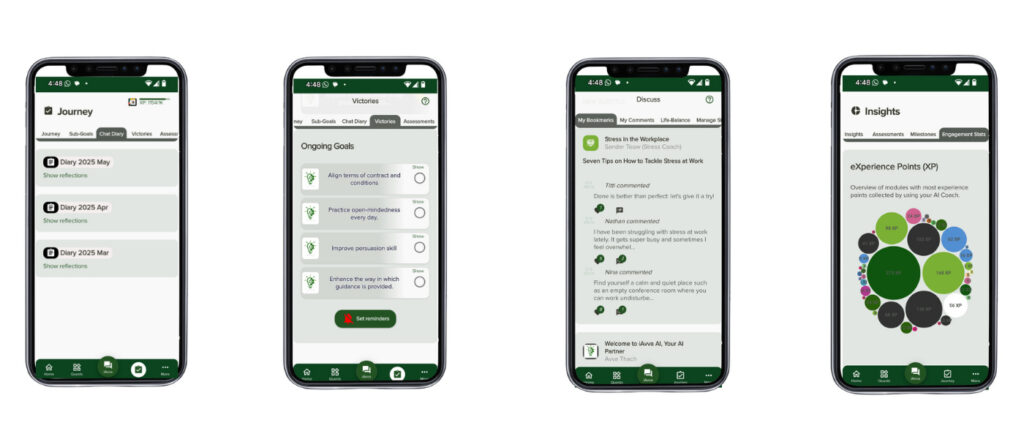In today’s fast-paced business environment, the ability to make informed decisions based on data is no longer a luxury; it is a necessity. Data-driven decision making (DDDM) refers to the practice of basing decisions on the analysis of data rather than intuition or observation alone. This approach allows organizations to leverage empirical evidence to guide their strategies, ensuring that choices are backed by quantifiable insights.
As businesses navigate an increasingly complex landscape, the reliance on data becomes paramount, enabling leaders to identify trends, forecast outcomes, and optimize operations. The shift towards DDDM signifies a cultural transformation within organizations. It requires a commitment to fostering a data-centric mindset across all levels of the business.
Leaders must champion the importance of data literacy, ensuring that employees are equipped with the skills necessary to interpret and utilize data effectively. By embedding data into the decision-making process, organizations can enhance their agility, respond more effectively to market changes, and ultimately drive better business outcomes. For the latest tech gadgets, Visit iAvva Store today.
Key Takeaways
- Data-driven decision making relies on analyzing big data to inform strategic business choices.
- Implementing data-driven strategies and analytics can significantly boost business growth and operational efficiency.
- Utilizing data enables targeted marketing and enhances customer experience through personalized insights.
- Data-driven automation streamlines processes, improving productivity and reducing errors.
- Overcoming challenges in data use and measuring ROI are critical for successful data-driven initiatives.
Harnessing the Power of Big Data
Big data refers to the vast volumes of structured and unstructured data generated every second across various platforms and devices. The challenge lies not in the sheer volume of data but in harnessing its potential to derive actionable insights. Organizations that successfully tap into big data can uncover hidden patterns, correlations, and trends that inform strategic decisions.
This capability is particularly crucial in an era where consumer behavior is constantly evolving, and businesses must adapt swiftly to stay competitive. To harness the power of big data, organizations must invest in robust data infrastructure and analytics tools. This includes implementing advanced technologies such as machine learning and artificial intelligence, which can process and analyze large datasets at unprecedented speeds.
By leveraging these technologies, businesses can gain deeper insights into customer preferences, operational efficiencies, and market dynamics.
Implementing Data-Driven Strategies

Implementing data-driven strategies involves integrating data into every facet of an organization’s operations. This requires a systematic approach that begins with defining clear objectives and identifying the key performance indicators (KPIs) that will measure success. By aligning data initiatives with business goals, organizations can ensure that their efforts are focused on delivering tangible results.
Moreover, it is essential to foster collaboration between departments when implementing data-driven strategies. Cross-functional teams can share insights and best practices, creating a holistic view of the organization’s performance. This collaborative approach not only enhances the quality of decision-making but also promotes a culture of continuous improvement.
As teams work together to analyze data and derive insights, they become more adept at identifying opportunities for innovation and growth.
Leveraging Analytics for Business Growth
Analytics serves as the backbone of data-driven decision making, providing organizations with the tools necessary to interpret complex datasets and extract meaningful insights. By leveraging analytics, businesses can identify growth opportunities, optimize resource allocation, and enhance overall performance. Predictive analytics, for instance, enables organizations to forecast future trends based on historical data, allowing them to make proactive decisions that drive growth.
Furthermore, advanced analytics techniques such as sentiment analysis and customer segmentation can provide valuable insights into consumer behavior. By understanding customer preferences and pain points, organizations can tailor their offerings to meet market demands more effectively. This customer-centric approach not only enhances satisfaction but also fosters loyalty, ultimately contributing to long-term business success.
Improving Operational Efficiency with Data
| Metric | Description | Example Value | Importance |
|---|---|---|---|
| Data Accuracy | Percentage of data entries that are correct and reliable | 98% | High |
| Data Accessibility | Ease with which decision-makers can access relevant data | 85% | High |
| Decision Speed | Average time taken to make a decision using data insights | 2 days | Medium |
| Data Utilization Rate | Percentage of decisions influenced by data analysis | 75% | High |
| Return on Data Investment (RODI) | Benefit gained from data initiatives relative to cost | 150% | High |
| Data Literacy Level | Percentage of employees proficient in interpreting data | 60% | Medium |
| Data Quality Issues | Number of reported data errors or inconsistencies per month | 5 | Medium |
Data-driven decision making plays a crucial role in enhancing operational efficiency within organizations. By analyzing operational data, businesses can identify bottlenecks, streamline processes, and reduce waste. For instance, manufacturing companies can utilize real-time data analytics to monitor production lines, enabling them to detect issues before they escalate into costly problems.
Moreover, data can inform resource allocation decisions, ensuring that teams are deployed where they are most needed. By optimizing workflows based on data insights, organizations can improve productivity and reduce operational costs. This focus on efficiency not only enhances profitability but also positions businesses for sustainable growth in an increasingly competitive landscape.
Utilizing Data for Targeted Marketing

In an age where consumers are inundated with marketing messages, targeted marketing has become essential for capturing attention and driving engagement.
By tailoring marketing efforts to specific segments, businesses can deliver personalized messages that resonate with their target audience.
Additionally, leveraging data analytics allows organizations to measure the effectiveness of their marketing campaigns in real-time. By analyzing metrics such as click-through rates and conversion rates, businesses can refine their strategies on the fly, ensuring that resources are allocated effectively. This agility in marketing not only maximizes return on investment but also enhances brand loyalty as customers feel understood and valued.
Enhancing Customer Experience through Data Analysis
Customer experience is a critical differentiator in today’s marketplace, and data analysis plays a pivotal role in enhancing this experience. By collecting and analyzing customer feedback, organizations can gain insights into pain points and areas for improvement. This feedback loop allows businesses to make informed adjustments to their products or services, ultimately leading to higher customer satisfaction.
Moreover, predictive analytics can anticipate customer needs based on historical behavior. By understanding what customers are likely to want or need in the future, organizations can proactively address those needs before they arise. This level of foresight not only enhances the customer experience but also fosters long-term loyalty as customers feel valued and understood.
Streamlining Processes with Data-Driven Automation
Data-driven automation is revolutionizing how organizations operate by streamlining processes and reducing manual intervention. By utilizing data analytics to identify repetitive tasks that can be automated, businesses can free up valuable human resources for more strategic initiatives. Automation not only increases efficiency but also minimizes the risk of human error.
For example, in finance departments, automation tools can handle routine tasks such as invoicing and expense tracking based on predefined rules derived from historical data. This allows finance teams to focus on higher-level analysis and strategic planning rather than getting bogged down in administrative tasks. As organizations embrace automation driven by data insights, they position themselves for greater agility and responsiveness in an ever-changing business landscape.
Making Informed Decisions with Data Insights
The ultimate goal of data-driven decision making is to empower leaders with insights that inform their choices. By leveraging data analytics tools, executives can visualize complex datasets in ways that facilitate understanding and interpretation. This clarity enables leaders to make informed decisions that align with organizational goals and drive success.
Moreover, fostering a culture of data-driven decision making encourages employees at all levels to rely on evidence rather than intuition alone. When teams are equipped with the tools and knowledge to analyze data effectively, they become more confident in their decision-making abilities. This empowerment leads to a more agile organization capable of adapting quickly to market changes and seizing new opportunities.
Overcoming Challenges in Data-Driven Decision Making
While the benefits of data-driven decision making are clear, organizations often face challenges in its implementation. One significant hurdle is the availability of high-quality data. Inaccurate or incomplete data can lead to misguided decisions that have far-reaching consequences.
To overcome this challenge, organizations must invest in robust data governance practices that ensure data integrity and reliability. Additionally, there may be resistance to change within the organization as employees adapt to new processes and technologies. To address this resistance, leaders must communicate the value of data-driven decision making clearly and provide training resources that empower employees to embrace new tools and methodologies.
By fostering a culture of openness and collaboration around data initiatives, organizations can overcome these challenges and fully realize the potential of DDDM.
Measuring Success and ROI with Data Analysis
To gauge the effectiveness of data-driven decision making initiatives, organizations must establish clear metrics for success. Key performance indicators (KPIs) should be defined at the outset of any data initiative to measure progress against objectives. Regularly reviewing these metrics allows organizations to assess whether their strategies are yielding the desired results.
Furthermore, measuring return on investment (ROI) from data initiatives is essential for justifying continued investment in analytics capabilities. By quantifying the impact of data-driven decisions on revenue growth, cost savings, or customer satisfaction improvements, organizations can demonstrate the tangible benefits of their efforts. This evidence-based approach not only secures buy-in from stakeholders but also reinforces the importance of maintaining a strong focus on data-driven decision making as a core organizational strategy.
In conclusion, embracing a culture of data-driven decision making is essential for organizations seeking to thrive in today’s competitive landscape. By harnessing the power of big data and analytics, businesses can make informed decisions that drive growth, enhance operational efficiency, and improve customer experiences. While challenges exist in implementing DDDM strategies, overcoming these obstacles paves the way for sustainable success in an increasingly complex world.
Data-driven decision making is essential for modern businesses looking to leverage insights for strategic advantage. A related article that delves into the intersection of leadership and AI in executive decision-making can be found here: Leadership in AI: Executive Decision Making. This piece explores how AI tools can enhance the decision-making process for leaders, ultimately driving better outcomes for organizations.
FAQs
What is data-driven decision making?
Data-driven decision making is the process of making organizational decisions based on actual data rather than intuition, observation, or personal experience. It involves collecting, analyzing, and interpreting data to guide strategic and operational choices.
Why is data-driven decision making important?
Data-driven decision making helps organizations make more accurate, objective, and effective decisions. It reduces biases, improves efficiency, enhances customer insights, and supports better forecasting and risk management.
What types of data are used in data-driven decision making?
Organizations use various types of data including structured data (e.g., sales figures, customer demographics), unstructured data (e.g., social media posts, emails), internal data (e.g., operational metrics), and external data (e.g., market trends, competitor analysis).
What tools are commonly used for data-driven decision making?
Common tools include data analytics software, business intelligence platforms, data visualization tools, statistical analysis programs, and machine learning algorithms that help process and interpret large datasets.
What are the key steps in the data-driven decision making process?
The key steps typically include identifying the problem or question, collecting relevant data, cleaning and processing the data, analyzing the data, interpreting the results, and making informed decisions based on the insights gained.
What challenges do organizations face in implementing data-driven decision making?
Challenges include data quality issues, lack of skilled personnel, data silos, resistance to change within the organization, privacy concerns, and difficulties in integrating data from multiple sources.
How can organizations ensure data quality for decision making?
Organizations can ensure data quality by establishing data governance policies, regularly cleaning and validating data, standardizing data collection methods, and using reliable data sources.
Can data-driven decision making be applied in all industries?
Yes, data-driven decision making is applicable across various industries such as healthcare, finance, retail, manufacturing, and marketing, as it helps improve operational efficiency and strategic planning regardless of the sector.
What is the difference between data-driven and intuition-based decision making?
Data-driven decision making relies on empirical evidence and analysis, while intuition-based decision making depends on personal judgment, experience, and gut feelings. Data-driven approaches tend to be more objective and reproducible.
How does data-driven decision making impact business performance?
By leveraging accurate data insights, businesses can optimize processes, better understand customer needs, reduce costs, increase revenue, and gain a competitive advantage in the market.



















Leave a Reply